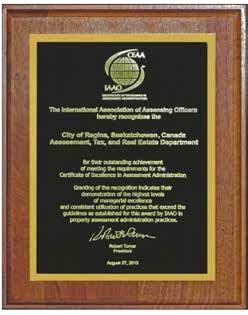
IAAO recognizes governmental units and individuals involved with assessment that integrate best practices in the workplace. This challenging and rigorous program is a self-conducted evaluation of specific, accepted, assessment administration and appraisal practices as defined in the IAAO publication Assessment Practices: Self-Evaluation Guide. Interested jurisdictions should review all of the materials below and direct questions to excellence@iaao.org.
Important note: Work towards earning the certificate should not begin until after application is made to the program. All necessary materials, including the Assessment Practices: Self-Evaluation Guide, are sent electronically to the jurisdiction upon submission of the application fee.
General Procedures
Application
Promotional Brochure
CEAA Statement on Jurisdictional Exceptions (Approved November 2017)
Excellence Recognized Is Excellence Realized (Fair & Equitable article)
No Jurisdiction Left Behind (Fair & Equitable article)
CEAA Logo (for use by Certificate holders only)
Congratulations to the entire staff of the following assessment offices on the achievement of the IAAO Certificate of Excellence in Assessment Administration!
The following assessment offices are certificate holders in good standing in the CEAA program.
Alabama
Mobile County Revenue Commission
Alberta
City of Calgary
Arkansas
Washington County
California
Los Angeles County
Colorado
Elbert County
District of Columbia
Real Property Tax Administration Assessment Division
Florida
Alachua County Property Appraiser’s Office
Brevard County Property Appraiser’s Office
Citrus County Property Appraiser’s Office
Clay County Property Appraiser’s Office
Hillsborough County Property Appraiser’s Office
Lee County Property Appraiser’s Office
Leon County Property Appraiser’s Office
Martin County Property Appraiser’s Office
Orange County Property Appraiser’s Office
Osceola County Property Appraiser’s Office
Palm Beach County Property Appraiser’s Office
Pinellas County Property Appraiser’s Office
Saint Lucie County Property Appraiser’s Office
Sarasota County Property Appraiser’s Office
Seminole County Property Appraiser’s Office
St. John’s County Property Appraiser’s Office
Georgia
Chatham County
DeKalb County
Hawaii
Maui County
Iowa
Linn County
Idaho
Ada County
Kansas
Johnson County
Manitoba
Province of Manitoba Property Assessment Services
North Carolina
Buncombe County
Catawba County
Durham County
Gaston County
Mecklenburg County
Wake County
Wake County
North Dakota
Williams County
New Mexico
Santa Fe County
Ohio
Franklin County
Oklahoma
Tulsa County
Saskatchewan
City of Regina
Tennessee
Davidson County
Texas
Bexar Central Appraisal District
Dallas Central Appraisal District
Denton Central Appraisal District
El Paso Central Appraisal District
Fort Bend Central Appraisal District
Harris County Appraisal District
Jefferson Central Appraisal District
Tarrant County Central Appraisal District
Taylor County Central Appraisal District
Wichita Central Appraisal District
Williamson Central Appraisal District
Virginia
City of Chesapeake
City of Hampton
City of Norfolk
City of Petersburg
City of Portsmouth
City of Roanoke
City of Suffolk
Fairfax County
Prince George County
Washington
King County
Thurston County
Wisconsin
City of Milwaukee